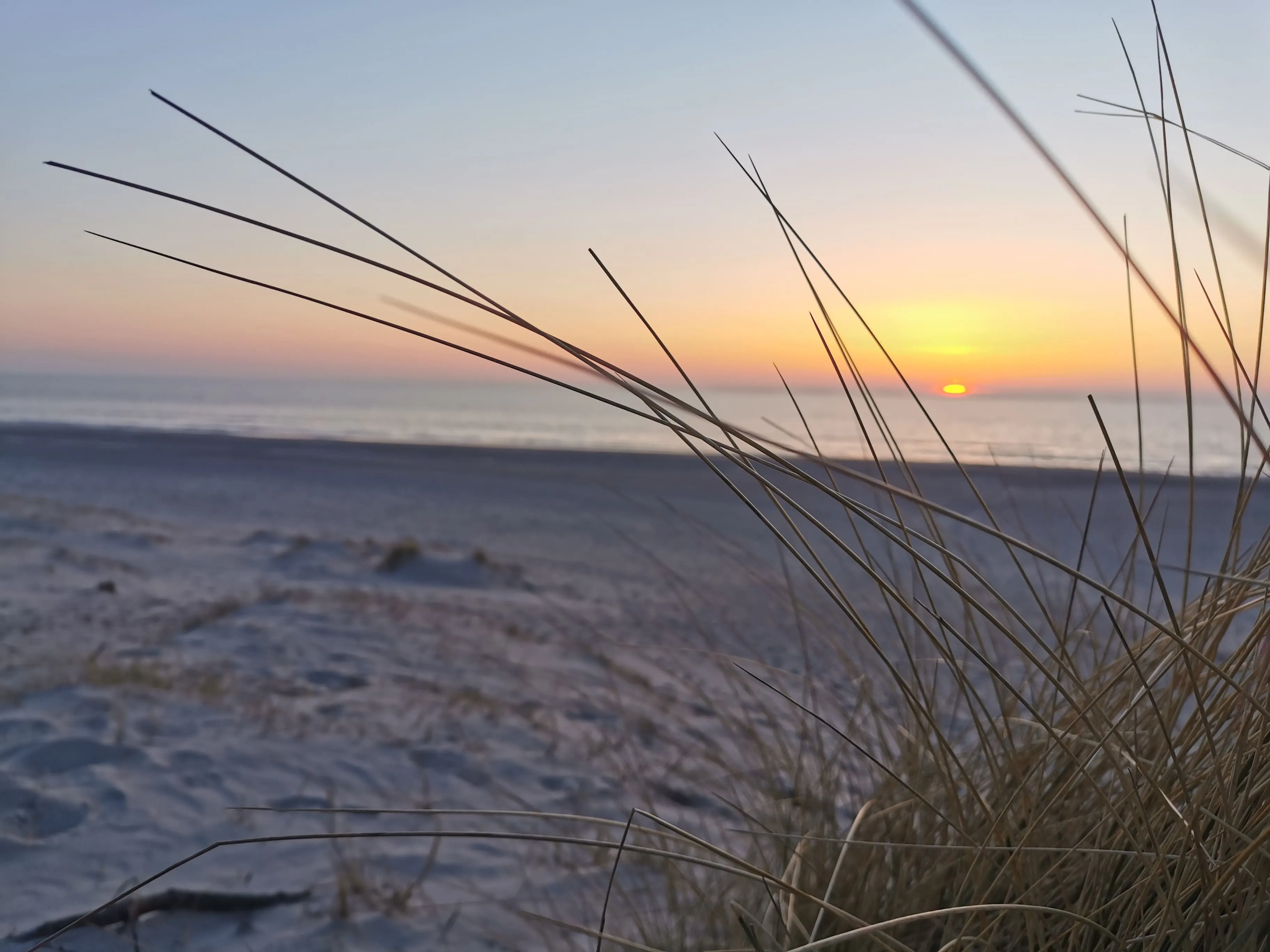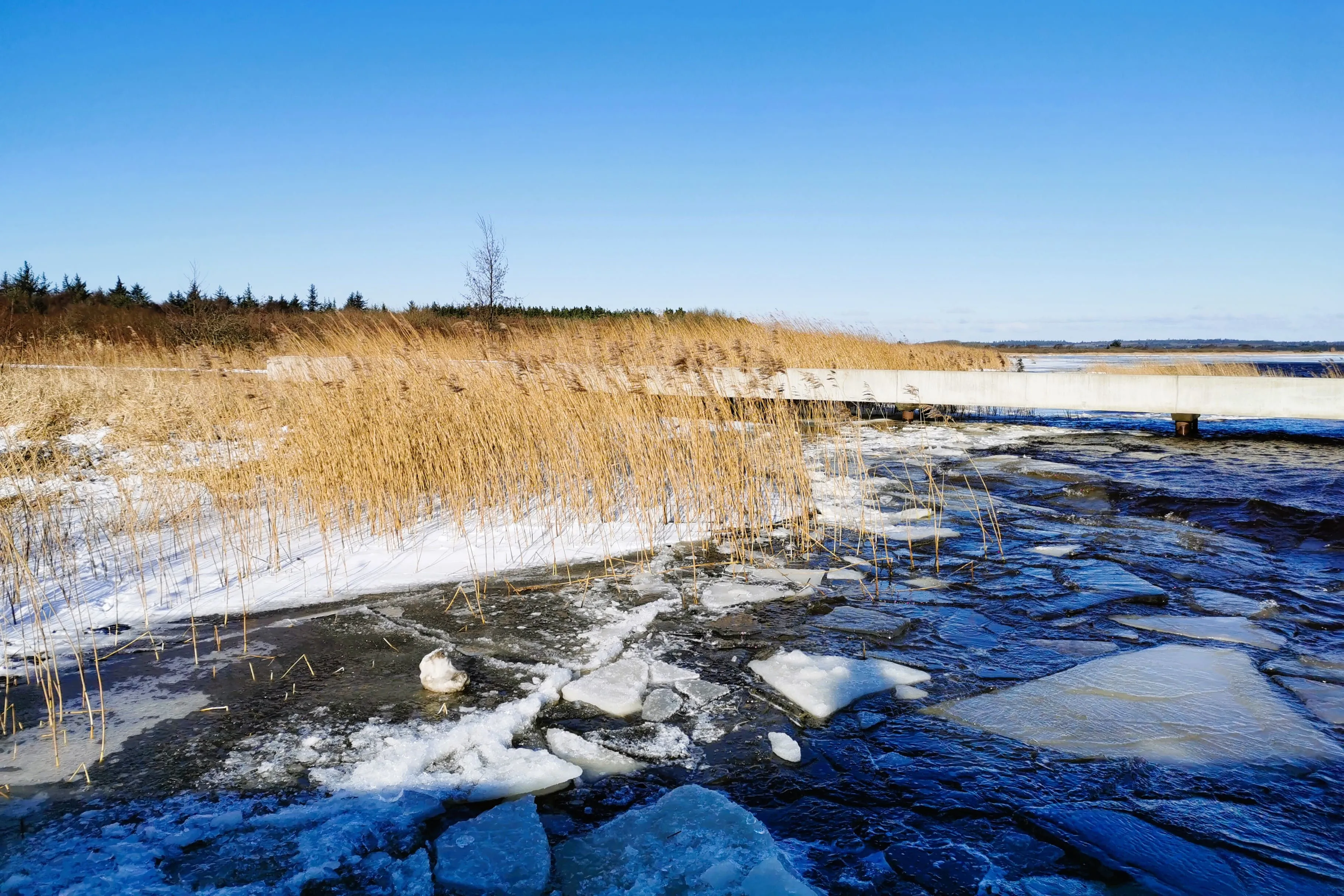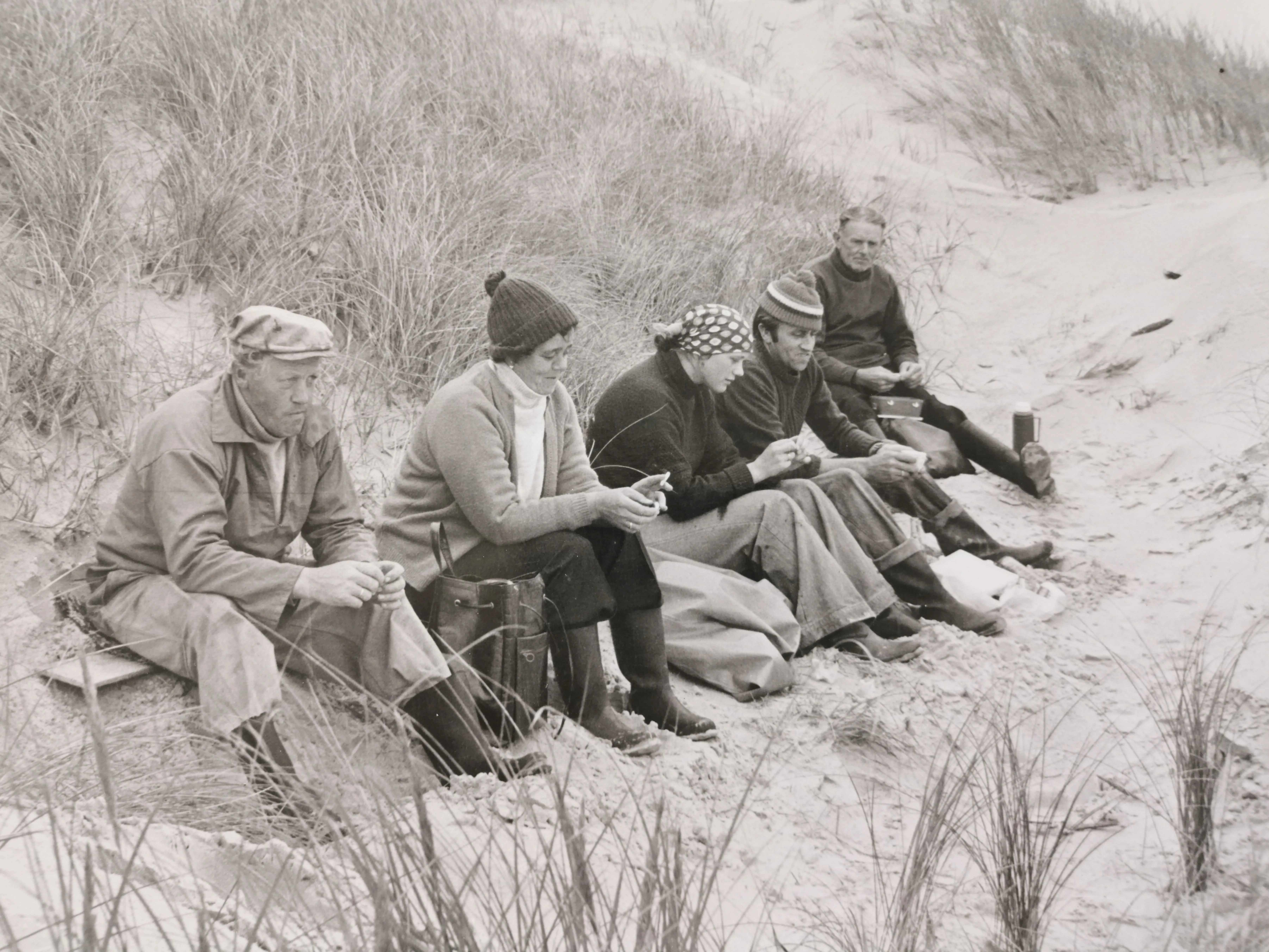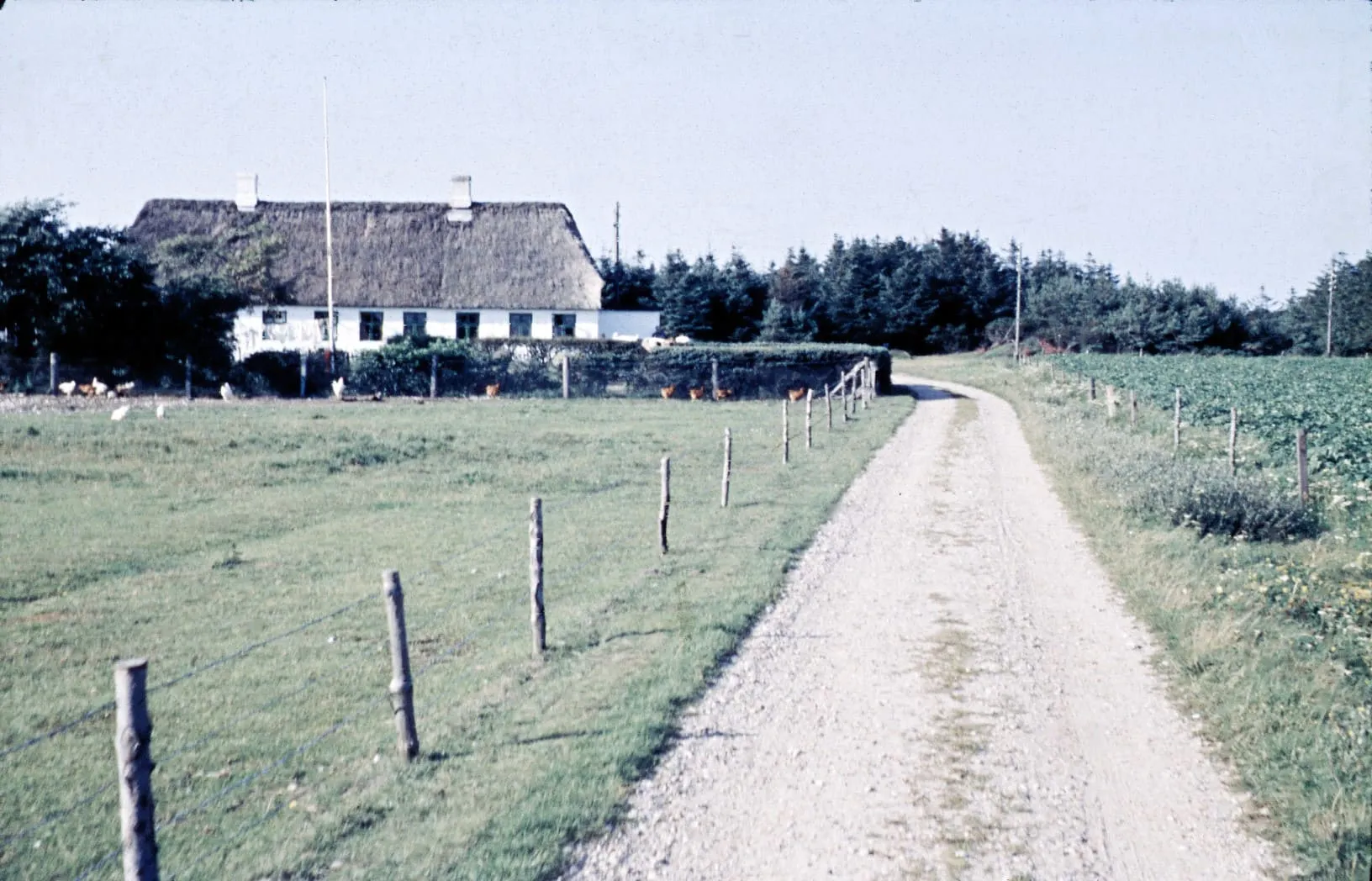Life on the West Coast
A tale of the wind- and wave-swept coast of Vejers
A tale of life on the wind- and wave-swept coast of Vejers
Vesterhavet Nature Park - Natura 2000
The North Sea Nature Park is one of the Danish nature parks where the uniqueness of this area must be protected and preserved for future generations through the interaction between nature and cultural protection, knowledge dissemination, tourism and business. Here in Denmark, the coastal part of the North Sea is called the North Sea. Large parts of the nature park coincide with the special protection areas of the EU project Natura 2000. Directly north of the Wadden Sea Nature Park near Blåvandshuk, the North Sea Nature Park begins and extends approximately 30 km north to the municipal border with Ringkøbing-Skjern and up to 9 km inland. The uniqueness of the Danish North Sea coast lies in its wide sandy beaches and diverse dune landscapes.
Early traces of settlement
Well protected beneath the dune sands of West Jutland lie traces of human settlement and land use from the Stone Age through the Bronze and Iron Ages to the Vikings and our grandparents' time. At today's military training area near Sølager (east of Grærup), 2 - 3,000 year old human footprints were discovered along with sheep and goats - animals that still play an important role in landscaping and land use today. During the Iron Age, large parts of the coastal oak forests disappeared as building and heating materials, while other forest parts were covered by drifting sand. Directly northwest of Henne Church (construction started around 1150), just a few meters from the original shore of Lake Filsø, was the largest Viking settlement in West Jutland with large longhouses, many workshops and lively trade. Evidence from the Middle Ages and Renaissance can still be found hidden in the towns and farms along the coast. Life in this nutrient-poor and sometimes very inhospitable nature has always presented people with challenges - fishing as a secondary occupation and farming with the cultivation of barley, rye, oats and potatoes with a few dairy cows, sheep and goats, as well as measures to contain sand drift contributed to the development of today's cultural landscape.
The Christiansen family in Vejers
Vejers Strand is located in the southwestern quarter of the Vesterhavet Nature Park. The history of the Christiansen family is in written testimonies and oral stories from the last century and up to the present day linked to Vejers and especially to the campsite StjerneCamping.
Jakob Christiansen (1912 - 1987), owner of Fugltoft Gård, laid the foundation for StjerneCamping in 1971 on former farmland. The farm originally included fields, cattle and horses for field work. The fields by Engesøvej grew beets, grain and potatoes, while the others often only grew grass for livestock - dairy cows, young cattle and sheep, some of which had to be fed with grain. Some of the land owned by the Danish Nature Agency between Vejers and Grærup was leased as cattle pastures - today, large herds of red deer gather there - to the delight of nature lovers and impressed tourists. Vejers was once a functioning community with a church, various farms, houses, a grocery store, school and clubs - until rumors became bitter reality during the 1960s and the military, who had been settled here since 1929, demanded further expansion of training areas. Now most of the farms in Grærup, Børsmose and Vejers were expropriated and with them a part of the history of this area was forgotten and left to (partly) decay and old Vejers like Grærup and Børsmose was no longer a living community.
The only farm in Vejers that was almost untouched by the military was Fugltoft Farm. However, large parts of the farmland were now declared as building land for summer houses, which naturally increased taxes. Farmer and dune warden Jakob Christiansen and his family had to part with some of the animals with a heavy heart and sell parts of the land as holiday home properties. In addition to the tasks they inherited from their ancestors such as being a dune warden, part of the lifeboat team and city council member, they faced new challenges and opportunities in growing tourism. With his uncle Lars Christiansen as a beach warden, Kristian, Jakob Christiansen's son, grew up firmly rooted in the Jutland sands with coastal farming, sea rescue and working to protect the dunes. StjerneCamping already started as a place where everyone "regardless of income could vacation under the stars - close to sea, dune forest and heath". A place founded in the tradition of people deeply connected to this region. A family that carries their love of nature, culture and their knowledge of the interconnectedness of the two with their toughness through the changing times. People who follow paths based on their values before others recognize or perceive them as meaningful.
A dune warden works to protect the dunes as a bastion against sand drift and coastal erosion and thus also takes care of the cultural landscape behind the dunes. Jacob's work now included keeping an eye out for tourists in the summer and stabilizing the paths in the dunes with straw and grass every October, just as in generations before him, "Marehalm" or "Sand-Helms" are planted together with helpers as dune fortification on the approximately 2 km long dune section in Vejers to the south. It rained a lot in 1975 and thus there was less wear and tear on the dunes from tourists. But with the spring storms that came in 1976, the beach was suddenly 1 m lower than before, and the huge amount of sand that was blown into the dunes smothered many of the dune grasses that had previously stabilized. In Jakob's grandfather's time (who was a dune warden for 55 years and only retired at the age of 86), there were still 15-20 helpers; in 1977, the planting work fell on the shoulders of 5 men and women. Holger and Mie Bloch, Åse and Kristian Christiansen and Jakob Christiansen. They planted around 500,000 sandhills from Vejers southwards on days when there were no military exercises - standing bent over in the soft sand, as in an Asian rice field, Mie and Åse were called "West Jutland's rice girls". The dunes were secured in a similar way until around 1985. Then the Danish Forest and Nature Agency began driving branches and twigs of conifers into the dunes to secure them and put on a stabbing jacket, so to speak. The replanting of helmets in large quantities disappeared, probably because there was no one left to do this heavy work.
History of StjerneCamping
Jakob Christiansen's idea to establish a campsite and supermarket in 1971 instead of selling more land to build summer cottages was his lasting contribution to the roots of future family generations in Vejers. Kristian's wife Åse came to Vejers in 1974 for a summer job in the ice cream parlor and stayed. Coastal farming and StjerneCamping increasingly became her life's work.
When Kristian took over Fugltoft Farm, dairy cows and cattle became his livelihood. Even when horses were replaced by tractors, the hours spent in the wild were a compensation for long days with multiple responsibilities. Not only with his daughters Kristine, Marie and Karen, but also with friends, he went on horse and cart rides in the coastal forests. Again, a new generation grew up in harmony with the surrounding natural and cultural landscape and can list jobs as biology teacher, nature guide and nature therapist on their CV.
Since 1995, Thursdays in July and August have been a fixed date for the flea market at StjerneCamping - eventful and busy days that still mean new life for many things that are no longer used. But from 2025, we're moving the flea market to Fridays, so there's plenty of opportunity to make a bargain and enjoy the atmosphere as part of the weekend!
The year 1996 marked a milestone in the development from a simple campsite to more comfort - the new service building with family bathrooms and disabled toilets was opened in time for the site's 25th anniversary. StjerneCamping officially received its 3rd star and welcomes its guests on January 1 and says goodbye on October 1.
After the old gas station in the center of Vejers had to close, the opening of Uno-X was celebrated in front of StjerneCamping in 2000, meaning locals and visitors no longer had to take a detour of several kilometers to get a full tank.
At the request of many guests, it was possible to celebrate Christmas at StjerneCamping for the first time in winter 2001 - the municipality approved the site to be open all year round in certain areas. The demand for camping vacations is now generally increasing. The year 2002 brought StjerneCamping further forward - the first 5 of 20 approved luxury cabins with shower and toilet were built - an alternative to the large holiday homes, offering everything you need for a vacation in nature in a small space at any time of year, even for those without a motorhome.
The relocation of the private shared path Råddyrvej to the east side outside StjerneCamping ensures a quieter stay on the site and no longer divides the site in two. In 2005, Kristian and Åse took over the management of StjerneCamping and half of the site. In 2008, container space was created for waste sorting, which we continue to refine. In 2010 Kristian and Åse bought out Kristian's brother Ove and changed the company form from I/S to Aps. Their daughter Marie became camp manager and with organizational talent, love and foresight, like a true daughter of the coastal landscape, managed the site together with her parents until 2022. During this time, the heat pump was added to supply the service building and solar cells on its roof. The apartment floor of the former single-storey reception building was built in 2011 with local construction company Bent Nielsen & Son. But it's not only our guests who will be well housed, the goats in our little "farmhouse" will also get a new cabin in 2013. In 2014/15 our black cabins (4 people) are completed, while in early 2015 we need a new sewage pump, the old one had simply become tired after a long time of work from 1971.
Marie temporarily left StjerneCamping as Camp Manager in 2022 to take on new professional challenges outside Vejers. However, from May 1, 2025, she will be back - now as campsite manager - and we are very much looking forward to having her back in the daily life! All three daughters are united in creating a vision for the future of StjerneCamping and continue to write family history here on the wind- and wave-swept coast of Vejers.

.webp)

.webp)
.webp)

.webp)



.webp)




















